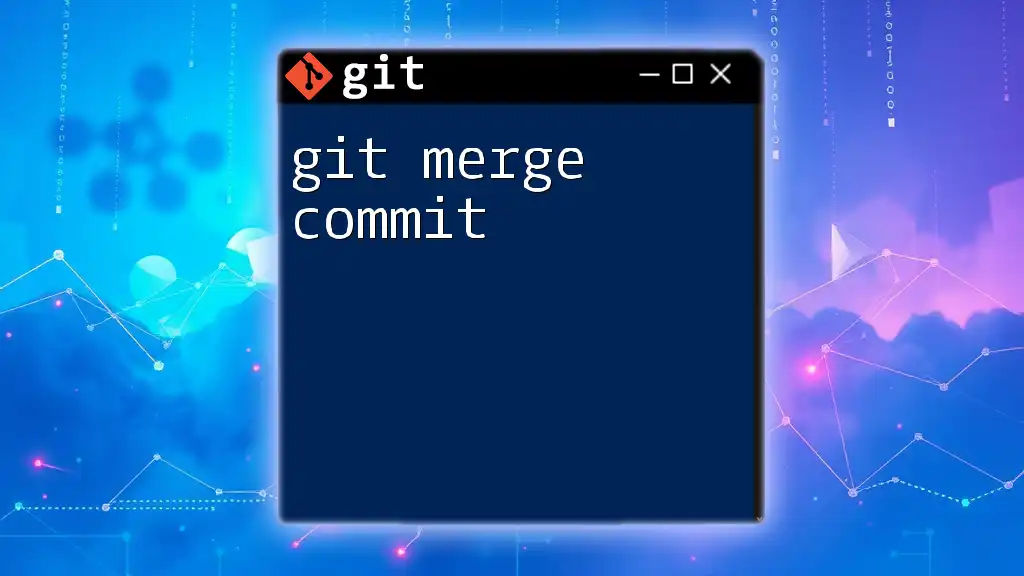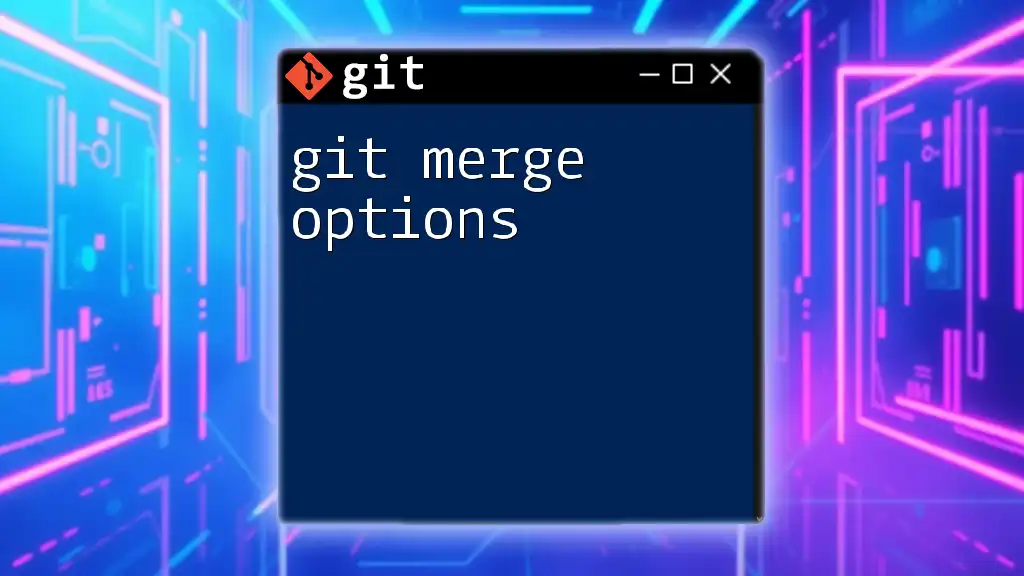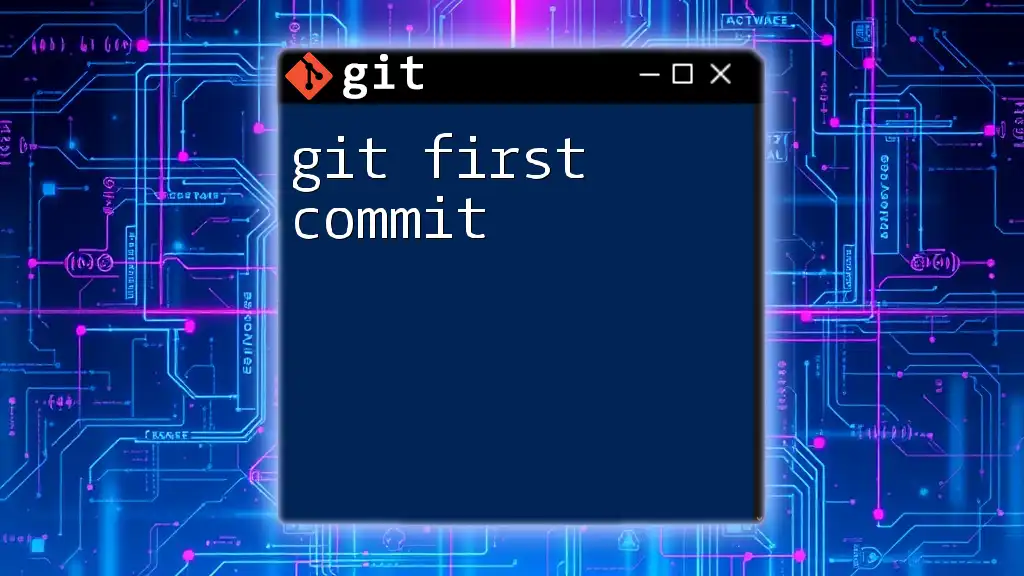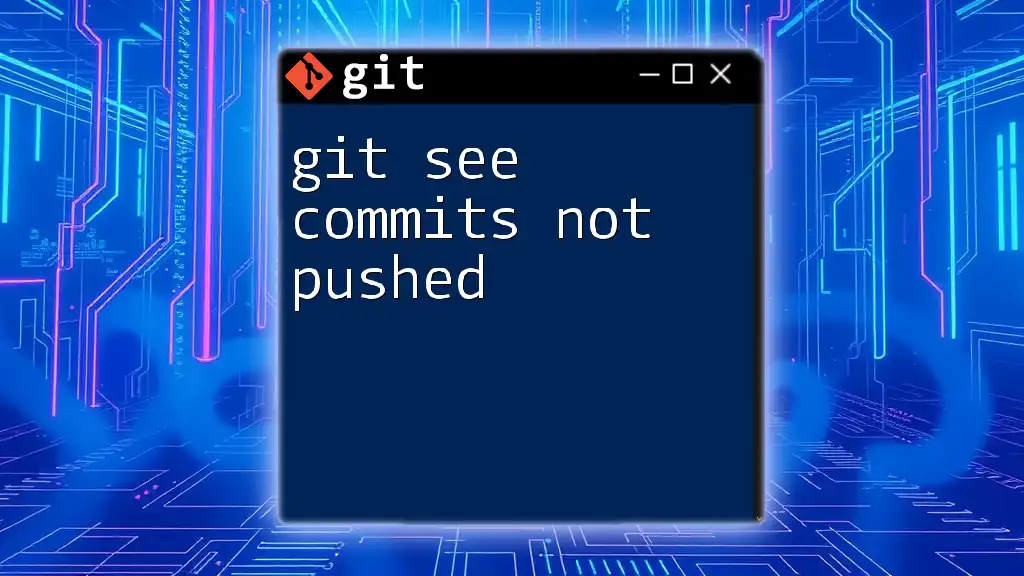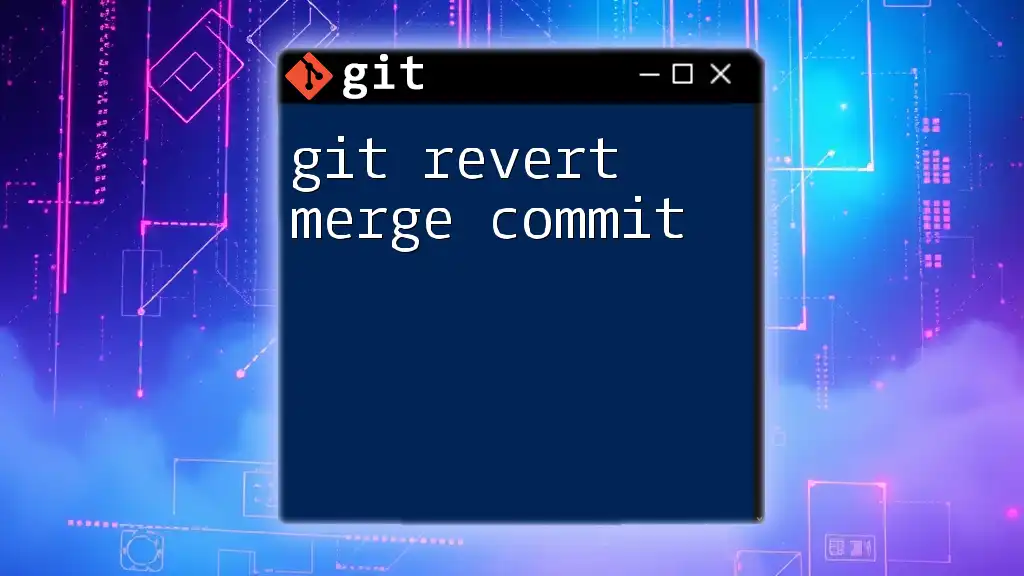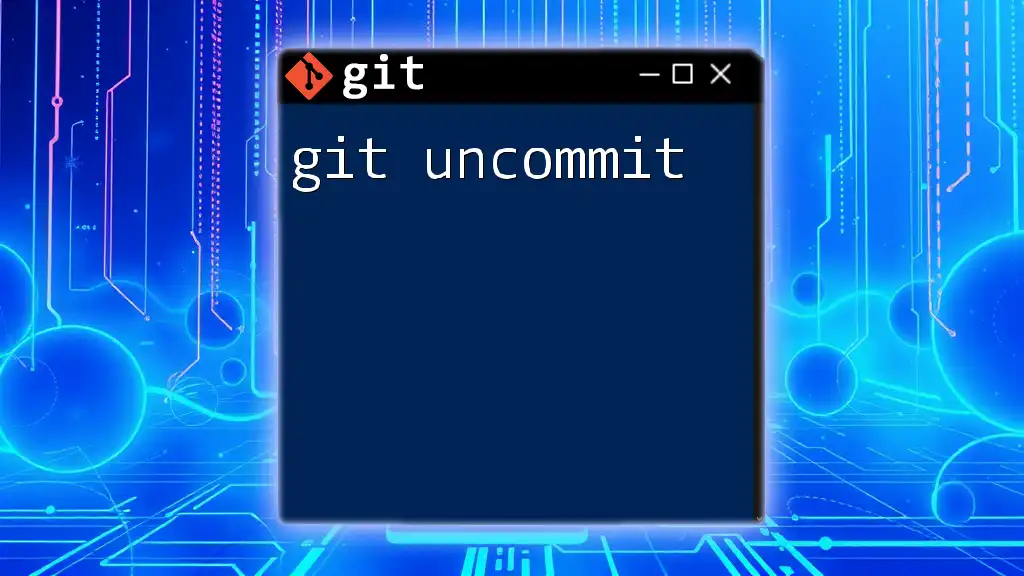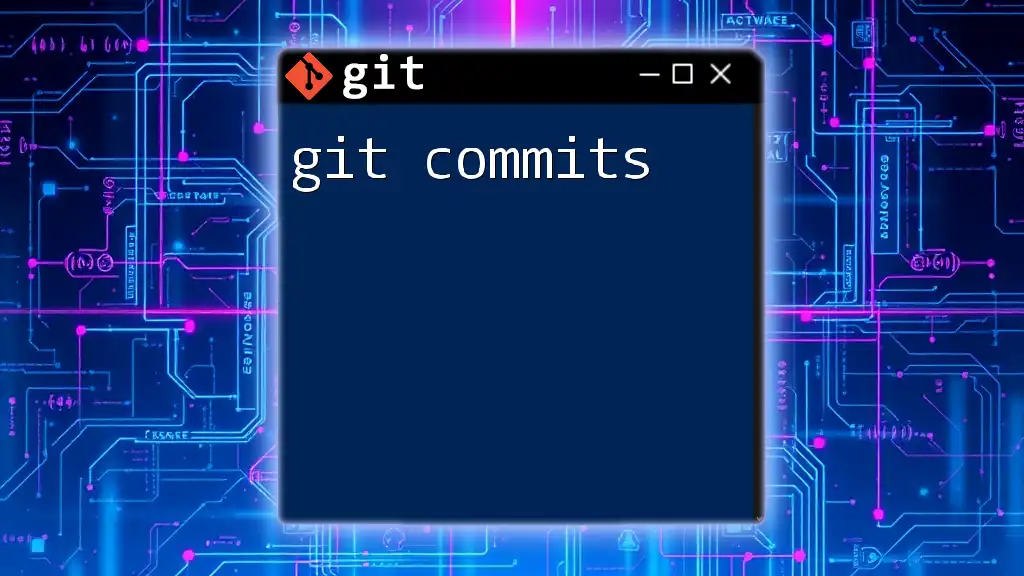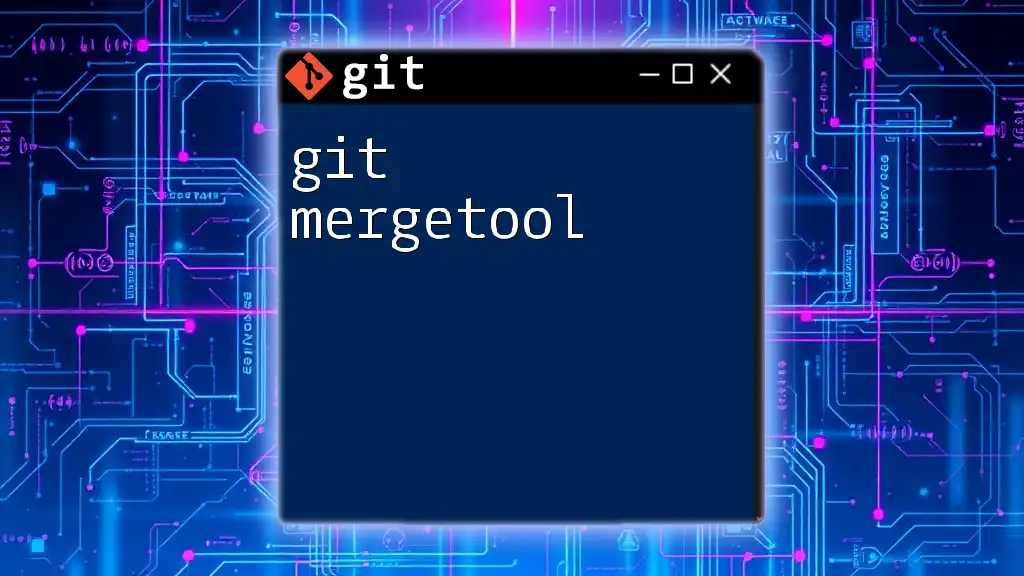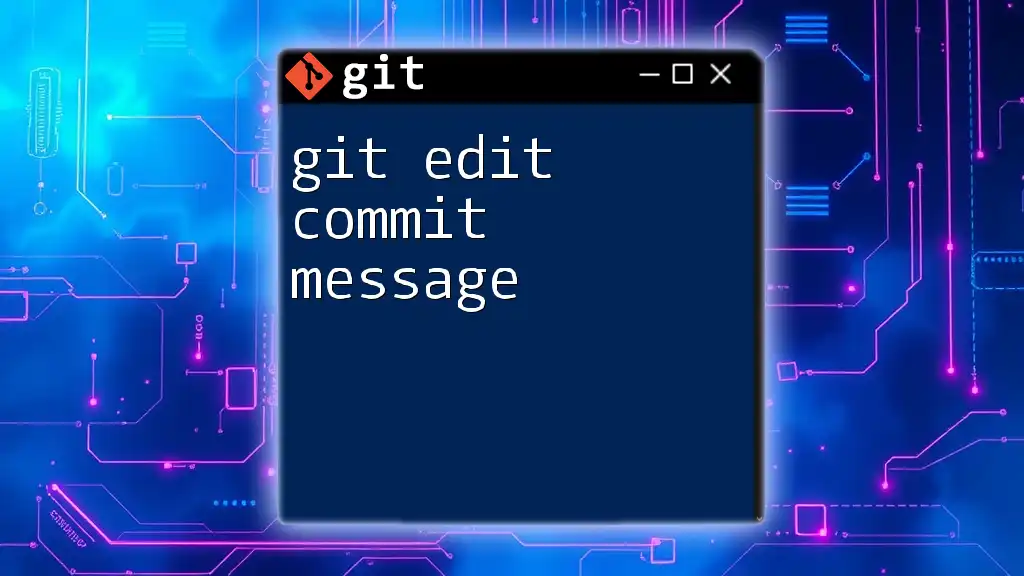A git merge commit is a special commit that combines the changes from one branch into another and is automatically created when merging branches that have diverged.
git merge feature-branch
Understanding Git Merge Commit
Definition of a Merge Commit
A merge commit is a special kind of commit in Git that is created when two branches are merged together. Unlike a regular commit, which simply adds changes to a single branch, a merge commit brings together changes from one branch into another, and it has multiple parent commits. This is essential for maintaining a clear history of how changes have integrated over time.
The key to understanding merge commits lies in recognizing that they often serve as a point in the history of the project where two divergent lines of development come together, capturing the essence of collaboration in software development.
When to Use Merge Commits
Merge commits are particularly useful in collaborative environments, where multiple developers may be working on different features or fixes. Key scenarios include:
-
Integrating changes from a feature branch into a main branch (like `main` or `develop`) after completing the feature.
-
Bringing in updates from a remote repository to ensure your local repository is in sync.
Using merge commits helps keep the project history intact and allows developers to see when certain features or fixes were introduced, which can be critical for debugging and project management.

Types of Merge Strategies
Fast-forward Merge
A fast-forward merge occurs when the branch you're merging into has no new commits since the branch you're merging from diverged. In this case, Git can simply move the pointer forward to the feature branch's latest commit, resulting in a cleaner, linear history.
For instance, if you have a feature branch that is behind the main branch, you can perform a fast-forward merge:
git checkout main
git merge feature-branch
This will update `main` to include all the changes from `feature-branch` without creating a merge commit.
Three-Way Merge
A three-way merge is the most common type of merge that occurs when there have been new commits on both the base branch and the target branch since they diverged. In this case, Git will create a merge commit that includes changes from both parents to unify them.
When executing a three-way merge, the command looks like this:
git checkout main
git merge feature-branch
Git will automatically create a merge commit unless there are conflicts or you specify otherwise. Below is a visual representation of a three-way merge:
A---B---C main
\
D---E feature-branch
After merging, the history will appear as:
A---B---C---F main
\ /
D---E feature-branch
Here, `F` represents the merge commit, bringing together changes from both branches.
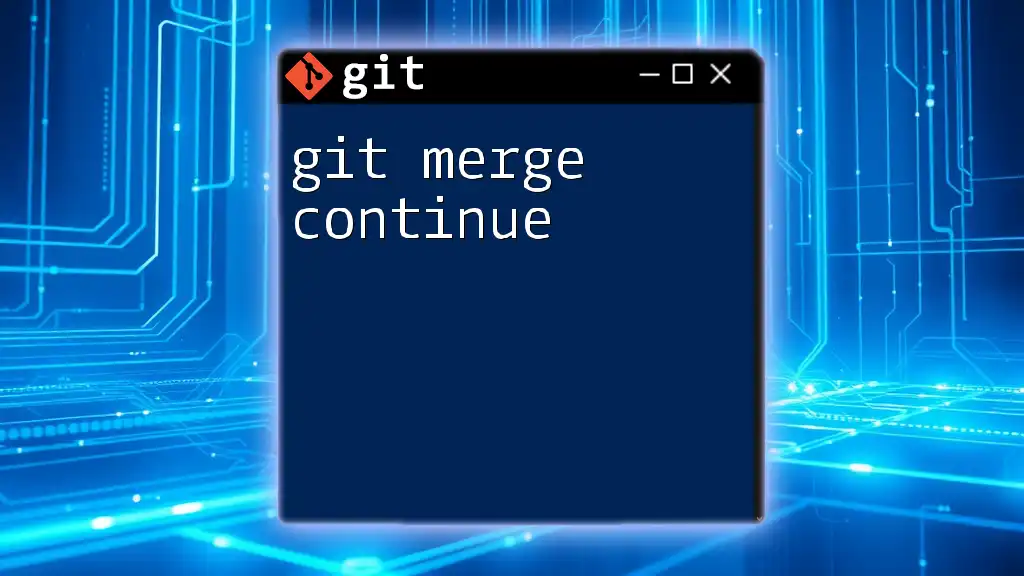
Performing a Merge Commit
Step-by-Step Process
Before you execute a merge commit, ensure that you have updated your branches. Here’s how to perform a merge commit:
-
Switch to the Target Branch: Use `git checkout` to switch to the branch you want to merge into, typically your main branch.
git checkout main -
Merge the Feature Branch: Run the `git merge` command followed by the branch you want to merge.
git merge feature-branch
At this point, if there are no conflicts, Git creates a merge commit.
Resolving Merge Conflicts
Sometimes, merging isn’t straightforward, and you may encounter merge conflicts. A merge conflict occurs when changes in two branches overlap and Git cannot resolve them automatically. Here’s how to handle merge conflicts:
-
Identify Conflicts: After attempting to merge, check the status using:
git status -
Edit Files: Open the affected files, where you’ll typically see sections marked with `<<<<<<<`, `=======`, and `>>>>>>>`. This notation indicates the conflicting changes. You’ll need to make manual edits to resolve these differences.
-
Stage Resolved Files: After resolving conflicts in the files, use:
git add <filename> -
Complete the Merge: Finally, finalize the merge by executing:
git commit
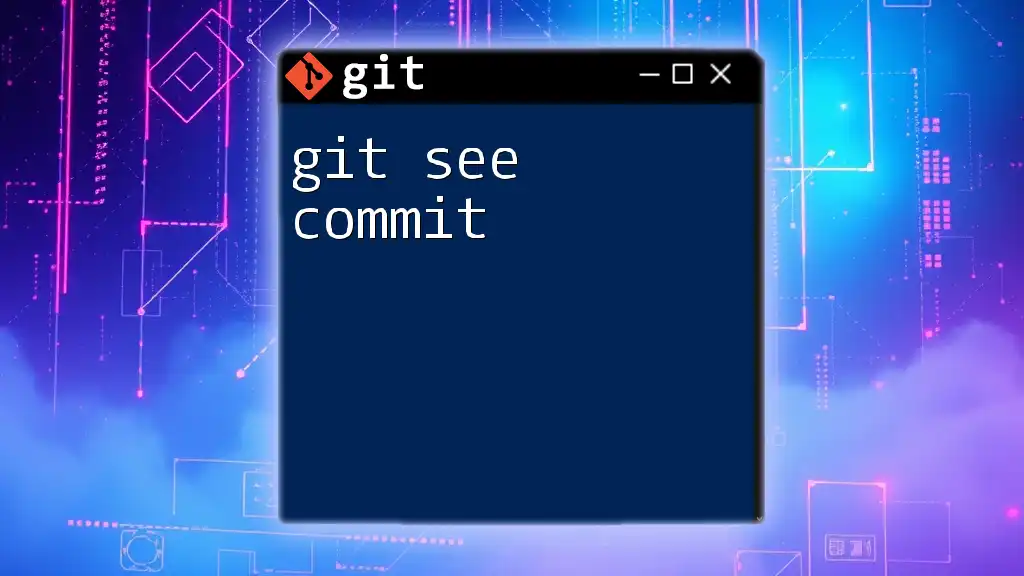
Best Practices for Merging
Keep Commit History Clean
Maintaining a clean commit history is crucial. Merge commits can clutter the history if used excessively, so consider using squash merges or rebasing when appropriate. Always ensure that merges reflect meaningful points in your project’s history.
Use Descriptive Commit Messages
Writing clear and concise commit messages is imperative for good version control practices. When creating a merge commit, include explanations for the changes merged. A good message helps team members understand the purpose of the merge.
Examples:
- Good: "Merge feature branch X: Implements new authentication flow."
- Bad: "Merging stuff."
Regular Merges
Merging frequently can prevent complex conflicts from arising. Encourage your team to integrate changes into the main branch regularly, ideally aligning with your development cycle. This practice also facilitates better collaboration and communication among team members.
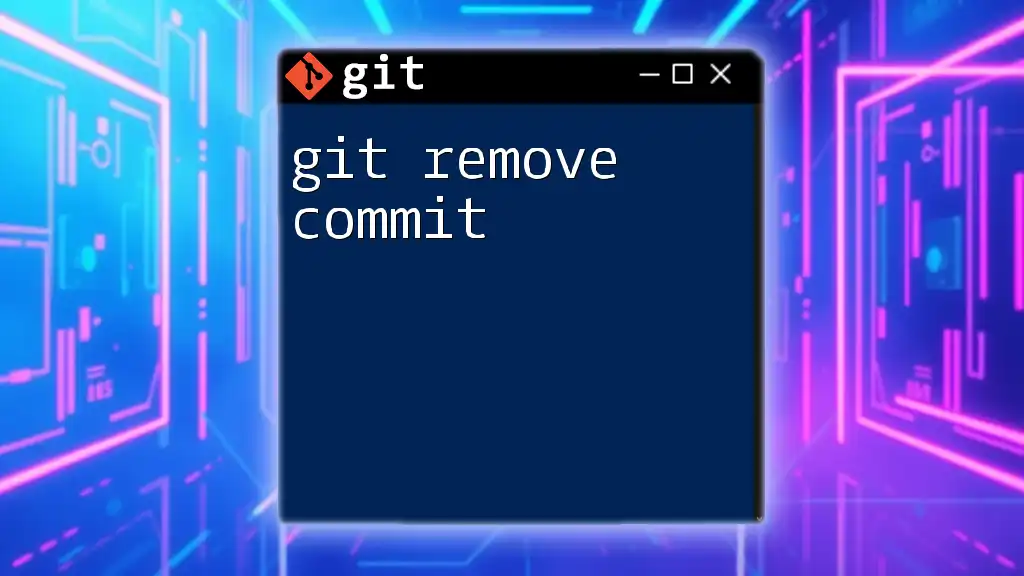
Common Mistakes to Avoid
Ignoring Merge Conflicts
Disregarding merge conflicts can lead to significant problems in your codebase. Always take the time to resolve conflicts thoughtfully and ensure that your code functions correctly before completing a merge.
Merging Without Reviewing
It’s crucial to review changes before merging them to avoid introducing bugs or unwanted features. Implement a code review process where team members can discuss proposed changes extensively.
Overusing Merge Commits
Frequent, unnecessary merges can lead to a cluttered commit history. Assess if a merge is needed or if alternatives like rebasing might be more fitting.
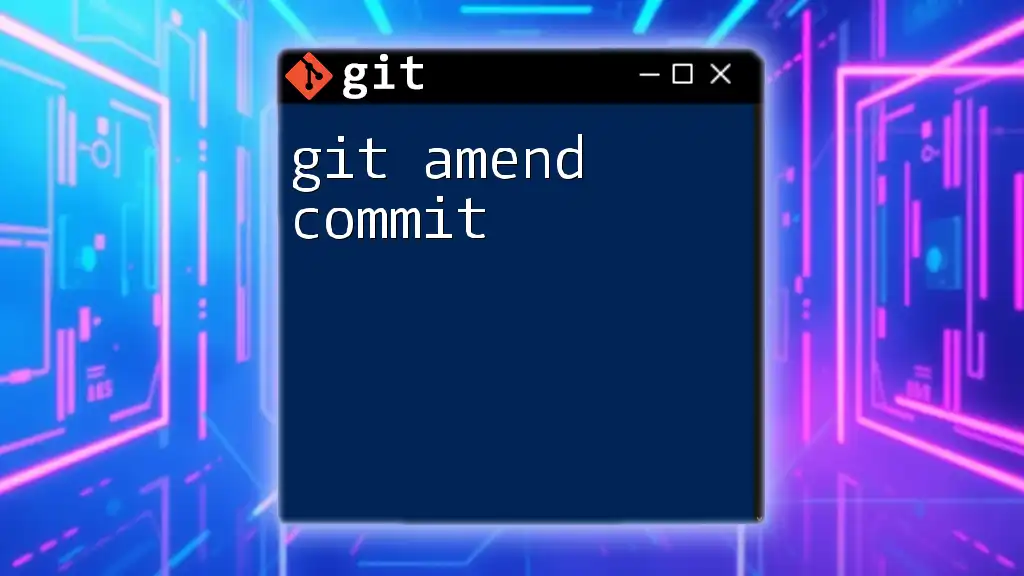
Tools and Resources
Git GUI Tools for Merging
Although terminal commands are essential for Git, several graphical user interfaces can facilitate easier merges, especially for beginners. Tools like GitKraken and SourceTree offer visual trees that help visualize merges and conflicts.
Command Reference
Here's a quick reference for important Git commands used during merging:
- `git checkout <branch-name>`
- `git merge <branch-name>`
- `git status`
- `git add <filename>`
- `git commit`
Further Reading and Tutorials
To deepen your understanding of Git merging, check resources like the official Git documentation, online tutorials, and community forums. These can provide additional insights, tips, and troubleshooting techniques.
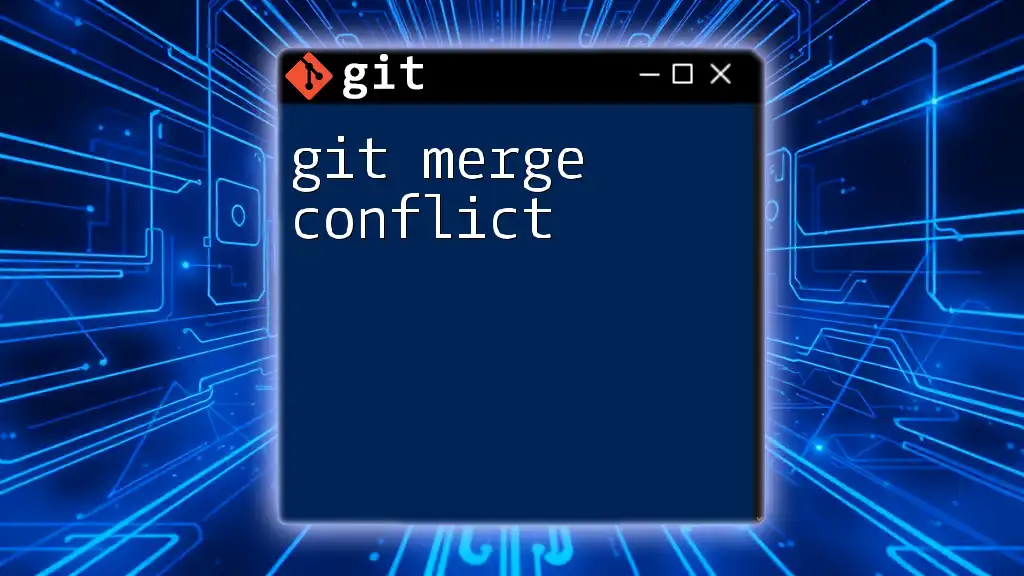
Conclusion
In summary, understanding the role of git merge commits is fundamental to effective collaboration in software development. By recognizing when to use merges, employing best practices, and avoiding common pitfalls, you can significantly enhance your Git workflow. Regular practice and engagement with Git will empower you to manage your codebase confidently and efficiently.
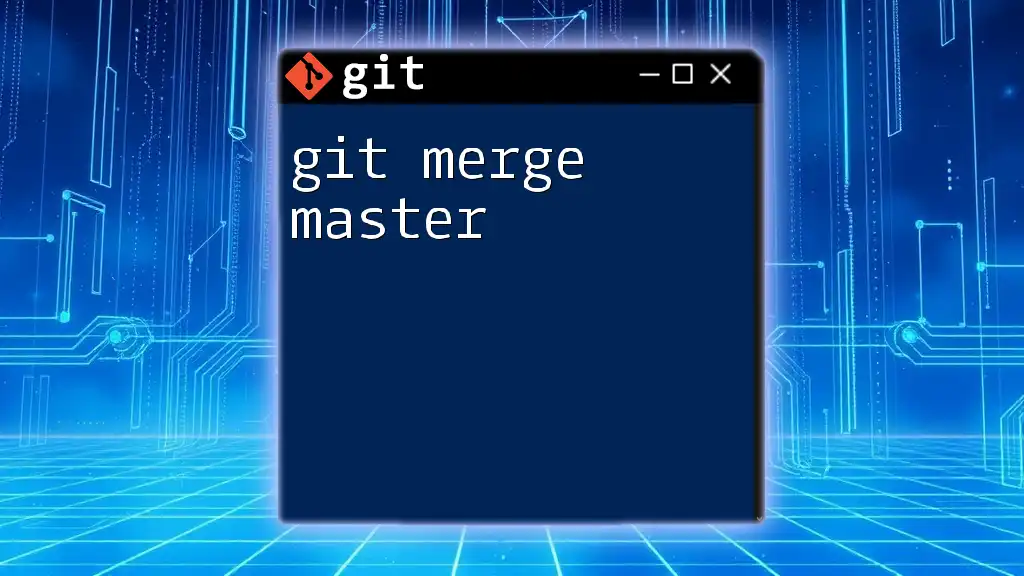
FAQs About Git Merge Commit
What happens if I do a merge without committing?
Git will prompt you to commit the merge. You will have an unfinished merge, and you must resolve conflicts and finalize your commit before proceeding.
Can you revert a merge commit?
Yes, a merge commit can be reverted, but it must be done with caution, as it could complicate the history. Use `git revert -m 1 <merge-commit-hash>` to revert while specifying a parent.
What are the differences between git merge and git rebase?
While both commands integrate changes, merge creates a new commit for the merging process, preserving the unique history of each branch. Rebasing, however, rewrites history, placing commits from one branch atop another, resulting in a cleaner, linear history but potentially losing the context of the original branch.

